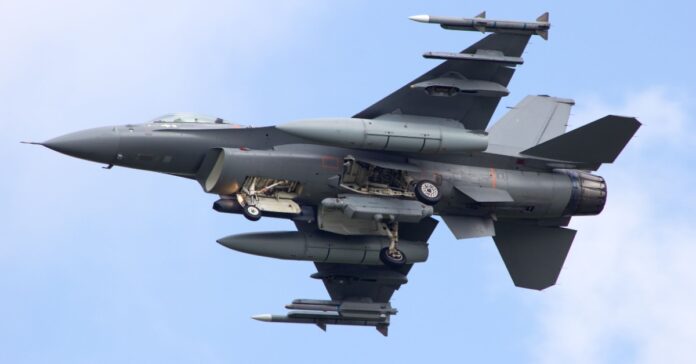
In yet another bewildering move by the Biden administration, the near-$1 trillion defense budget for Fiscal Year 2025 (FY25) has left the United States Air Force grappling with a critical problem. Under this budget plan, 250 aging aircraft, including vital fighters, are set to be retired. At the same time, only 60 new F-35s and F-15s will be procured—down from the originally planned 72. It’s a decision that jeopardizes our national security and plays right into the hands of our adversaries, particularly Russia and China.
President Biden unveiled this staggering defense budget request on March 11, allocating $895.2 billion for FY25, with $849.8 billion designated for the Department of Defense (DOD). Critics, led by House Armed Services Committee Chair Rep. Mike Rogers (R-Ala.), argue that this budget “fails to keep pace with inflation and our adversaries.” Unfortunately, it seems the Biden administration is disregarding the growing threats on the global stage.
The heart of the issue lies in the Air Force’s plan to retire 250 jets, bringing the total fleet to less than 5,000 aircraft, 54 fighter squadrons, and around 325,000 active-duty personnel. This is a far cry from the Air Force’s strength in 1990 when over 600,000 personnel served, supported by approximately 150 fighter squadrons. The Air Force has shrunk over the past 30 years, making us more vulnerable than ever.
The proposed FY25 defense budget request exacerbates this problem, especially in fighter jets. The budget falls short despite the Air Force’s focus on modernization, constrained by the 2023 Fiscal Responsibility Act. Andrew Hunter, Assistant Air Force Secretary for Acquisition, Technology, and Logistics, acknowledges the limitations imposed by the Fiscal Responsibility Act, emphasizing the increased risks and difficult trade-offs.
The tangled budget mess continues from FY24 when the National Defense Authorization Act (NDAA) was only adopted in December, two months after the fiscal year began. The Fiscal Responsibility Act, enacted in July, imposed caps on base FY24 discretionary spending at $1.59 trillion. For FY25, the defense top lines are capped at $895 billion, forcing the Pentagon to reduce its planned purchase of 107 fighter jets to a mere 86.
The Air Force, originally planning to acquire 72 fighters, including 48 F-35As and 24 F-15EXs, must now settle for 60 new fighters—42 F-35As and 18 F-15EXs. The Navy, facing similar restraints, is also cutting back on fighter purchases, compromising our naval aviation capabilities. These decisions are a disservice to our military readiness and a boon for those wishing to exploit our vulnerabilities.
Maj. Gen. Michael Greiner reveals that FY25 will be the last year the Air Force purchases F-15EXs, leaving us short of the targeted 104. This, coupled with the reduction in F-35 procurement, raises concerns about the capability of replacing retired jets swiftly. The administration’s gamble on a slower-paced replacement plan is a reckless move, leaving our Air Force ill-equipped to defend against evolving threats.
As we witness the decline in air power, it’s crucial to recognize the potential consequences. The world has changed since Desert Storm, and our military must adapt to emerging challenges. The proposed budget reflects a failure to prioritize national defense adequately, putting America at risk in an increasingly uncertain geopolitical landscape.
In the coming months, Congress has the opportunity to rectify this situation during spring and summer hearings. Shuffling funds within the Fiscal Responsibility Act’s limits or prioritizing additional fighters on the unfunded priority list can address the shortfall in aircraft acquisition. The cards might also include A supplemental spending package to bridge the gap left by the administration’s shortsighted budget decisions.
It’s time for our representatives to stand up and demand a defense budget that safeguards our nation. Our air superiority is not a luxury; it’s necessary to ensure every American’s safety and security. Let’s not allow bureaucratic red tape and misguided budgeting to compromise the very foundation of our national defense. The Biden administration must wake up to the reality that national security should never be a bargaining chip.







